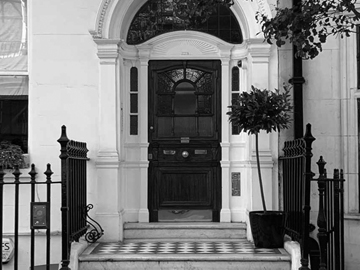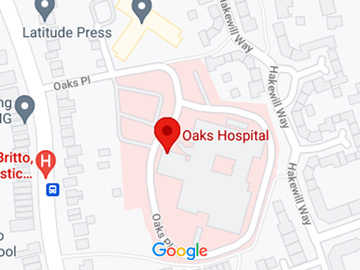Quick overview
How long does it take?
60 minutes
What type of anaesthetic is used?
Daycase general anaesthesia
Pre-admission tests
MRSA screen
Breast screening (scans etc) according to breast health
Nil else in most patients
Do I have to stay over at the hospital?
Not required. Daycase general anaesthetic surgery
Surgical Drains
Not required
Incisions & scarring
Short scar in the breast crease
Garments
Sports bra for 6 weeks
Cost
From £6,000
How long before I can…
Why consider breast augmentation?

The highest quality silicone implant is selected to match exactly the ‘footprint’ of each breast in width, height, ‘droop ‘ (ptosis) and shape. The wide choice of implant reflects a large range of volume, shape, surface texture, and cohesivity (stiffness) for a large range of desired outcomes. Planning for implant size is usually ‘clinical’ at the mirror and based upon the breast ‘footprint’, the breast base and dimension, and the individual aims. 3D scanning is available and whilst it cannot emulate the behavior of natural tissues, it can help with anticipating expectation of outcome .
The implant is placed in the correct surgical pocket, in front of, or behind (or partially behind), the pectoralis muscles and behind the breast to achieve the best individual result. The scar is designed to be fine and as discreet as possible, usually in the crease below the breast, or around the areola.
Meticulous planning achieves a bespoke, natural breast, giving the freedom to wear the clothes of choice and achieve a natural confidence for a life changing impact.
Breast augmentation can be combined with other breast surgeries, including breast uplift, nipple remodelling, and fat transfer for contour finesse and bespoke asymmetries..
Breast augmentation patient – review in Top Doctors
Benefits
What is breast augmentation?

Women of all ages seek advice for breast augmentation surgery, whether it be for a naturally under proportioned bust , asymmetry, or droopy/ptotic breasts with loss of volume post childbirth. The negative impact on self-esteem, body image and even the ability to form loving relationships can be niggling, constant and depressing.
The aim is to restore breast balance and rejuvenate the breast, to restore natural confidence and self – esteem. A ‘simple’ breast augmentation can deliver additional benefits, such as reducing the impact of breast skin stretch marks and improving the position and aesthetic balance of the nipple. Very bespoke breast rebalancing can be achieved by more complex combination options such as with uplift surgery, fat transfer or nipple remodelling.
Our practice philosophy to ‘follow breast health’ also maintains relationships providing care throughout life and the ongoing restoration of breast shape according to age, post – childbirth, clothing preference, and fashion. It becomes possible to down-size and retain shape, femininity, and proportion with increasing age and change in fashion. The larger implants chosen in youth can, for example, be replaced with smaller implants, with or without uplift to suit comfort and shape in more mature life.
FAQ’s
The consultation is usually a 2-3 step ‘analysis phase’ at either our London or Essex clinics. Alternatively we can arrange a video consultation from the comfort of your own home.
1. Discretionary free-of-charge video-call
Jonathan will enjoy introducing himself to you in a free video-call to discuss your request. It would be very useful if you could send us some selfie photographs (to medsec@jonathanbritto.com; held securely as part of your medical record), which will help inform the conversation.
2. Face-to-face consultation
If you would like to receive a detailed written analysis, with a quote for treatment, Jonathan will meet you in the clinic for a face-to-face appointment. You are welcome to bring a friend or family member for support. The medical history and physical analysis in the privacy of the consulting room is an essential part of making the treatment plan.
Mr Britto will firstly spend some time going through the options available and explaining the technicalities of the procedure. You will then be examined in a private, warm room providing you with your privacy and dignity and chaperones are provided if you wish. Diagrams and markings on the breast at the mirror are used to fully explain the plan, the technique and the scars which result.
After this meeting you will receive a detailed plan and a written quote, together with a suite of information about our ’twilight’ surgeries, relevant comments from prior patients, and some insights about the psychology and holistic care that is part of our commitment to you.
3. Face-to-face or remote catch up…
Jonathan recommends that you open a “procedure diary” on your phone, into which you can drop any questions that occur to you throughout the day, and after receiving the clinic letter and information from your face-to-face consultation.
This third conversation is to answer any questions you have, and to allow Jonathan to ask you about any reflections he has had to refine your care.
…. Step 4…..
In truth, our door is always open, and Jonathan will be very happy to see you face-to-face or remotely if you have further questions about your requested procedure.
Consultation fees: £295 is charged prior to Step 2
Data Security:
Please be aware we use a data security software to encrypt any correspondence that we send you which includes your personal data. These emails may fall into your junk folder, so following your consultations please keep a regular check on this folder.
If you wish to receive unencrypted, ‘open’ email to your inbox – please can be requested via an online, ‘one click’ consent form.
Bathing or swimming should be avoided. An unwired bra or close fitting ‘crop – top’ is worn for 6 weeks (day and night) and physical activity is restricted for one month until the tissues settle in their new position. The best sleep position is on the back, in a bra, to prevent movement of the tissues in position until all has healed. Driving, household chores and professional activity is usually after one week.
All procedures for appearance change risk an ‘expectation gap’, which we shall discuss in detail to make sure that the surgery is a well – planned and appropriate choice.
The risks and responsibilities of each procedure are discussed and documented so that surgery will only proceed on an open and honest understanding.
Recent years have raised concerns about breast implant illness, capsular contracture, breast capsule associated cancers, and implant integrity. These concerns are discussed in the consultations with all the available evidence at hand.
The overall risk of early secondary surgery for implant failure or implant rotation is extremely low (less than 5%). The risk of capsular contracture is very low in modern implants, and the risk of capsular associated cancers is extremely low (emerging figures).
Breast implants remain a safe option for women who seek both emotional and appearance related benefits.
Implant related secondary surgery may be for reason of appearance change – ‘I want to be bigger/smaller/uplifted’ – or for comfort and relief of symptoms related to change in the breast or the implant capsule. The most common reasons are for appearance change – new implants, or implant-uplift surgery.
A full explanation of terms and conditions, including fees for secondary surgery or return to theatre is provided during the ‘analysis phase’.
There are so many choices to be made in breast augmentation surgery. When choosing an implant we consider simple implant related matters – the volume, the shape, the height, and the width of the implant; its surface ‘texturing’ and the ‘feel’, (cohesivity).
The position of the surgical implant pocket is considered, and modified in the case of previous implants, and what implications this has for the result. What seems very daunting at the start becomes very easy when the context is explained.

£
London
0203 752 1566
Jonathan Britto
Once again I was impressed by Mr Britto’s gentle manner and ability to listen and understand what I was trying to achieve. My second op was going to be more technical. As well as the removal of first implants which had some scar tissue, I had some breast sagging and I had outright declined an uplift (didn’t want the scar). I wanted bigger size but still a natural look and some side boob! I even sent a picture asking for a specific look! No easy task, but Mr Britto delivered a fantastic result and with some clever jiggery pokery and use of a tall anatomical high profile implant, he managed to give me the exact look I wanted. His aftercare was thorough and his assistant Karen and his Secretary, Sharon were also there for me when I had pre and post op health anxiety. I genuinely cannot recommend Mr Britto and his team enough, thank you for looking after me! 🙂

£
London
0203 752 1566
Jonathan Britto
You will feel better and more confident in clothing and out! These are life changing surgeries, and the evidence is overwhelming for the quality of life benefits!




